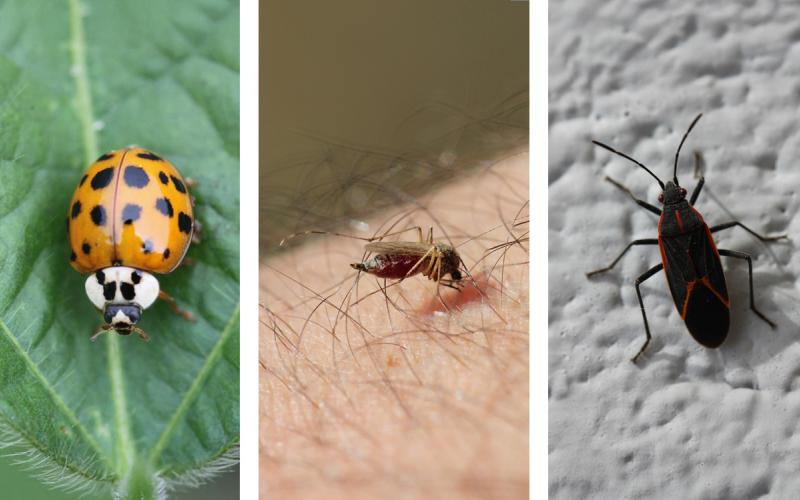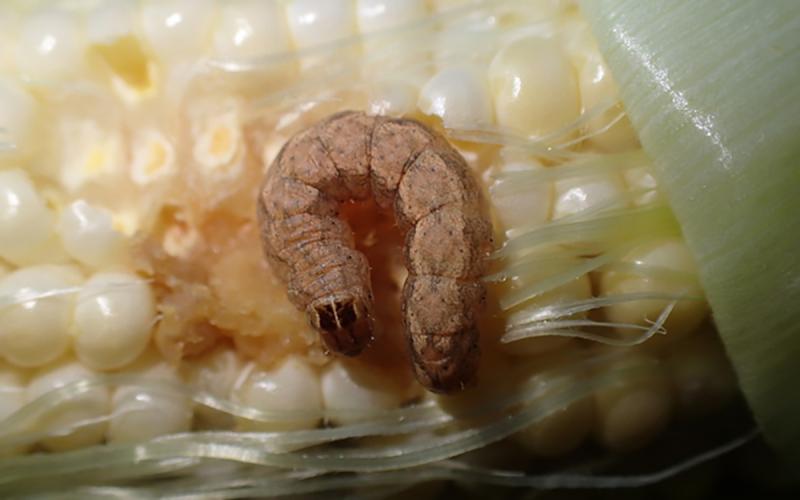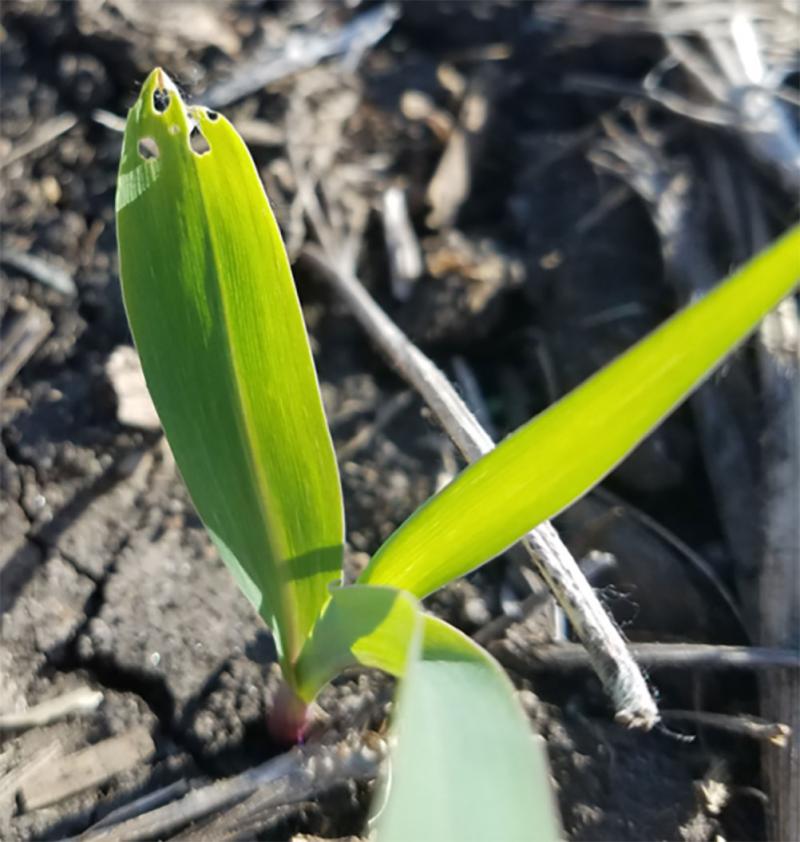
We have received numerous reports this week of small holes in V1-V2 corn plants (Figure 1). Those small holes are the result of feeding by early instar cutworm caterpillars and, more specifically, black cutworm caterpillars. After hatching, black cutworm caterpillars initially feed on the leaves and are too small to clip the plants. As they develop and become larger, they will pose a clipping or cutting threat.
If you’re observing corn plants with defoliation on the leaves, scout the fields closely to determine if the black cutworms have caused enough stand loss to warrant treatment.
Identification
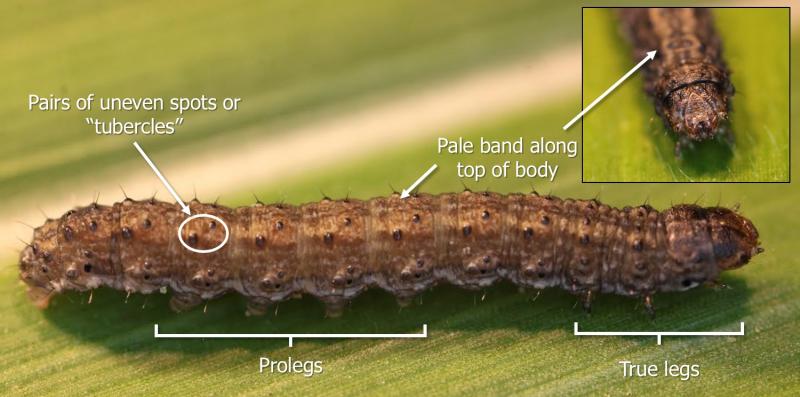
Black cutworm caterpillars range in color from light gray to brown to black and have a pale band that runs the length of the body along the top. Caterpillars appear to have rough or “pebbly” texture because their skin is covered with pairs of uneven sized spots or tubercles located on the sides and near the top of each abdominal segment (Figure 2). These spots or tubercles can be used to separate black cutworm from dingy cutworm (dingy cutworms have equal sized spots), which damage corn less frequently. Head capsules of black cutworm caterpillars have two black stripes. Black cutworm caterpillars also have three pairs of true legs and four pairs of abdominal prolegs. When fully mature, caterpillars are approximately 1.5 inches in length.
Injury to Corn
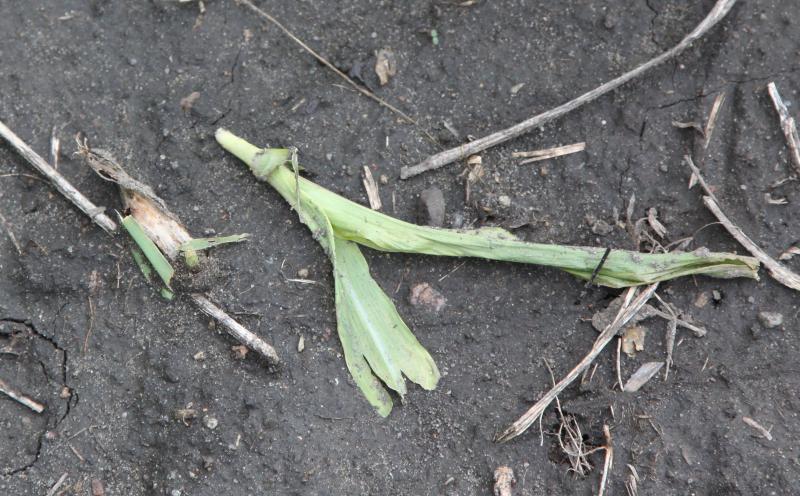
Black cutworm caterpillars feed on corn tissues close to the soil surface; caterpillars prefer to not climb plants. Stand reduction occurs when caterpillars become large enough to cut corn plants at the base (Figure 3). Corn plants can tolerate black cutworm feeding after V5 leaf stage. Injury to corn is associated with tillage practices that allow for plant residues or weeds in the spring, fields previously planted to sod or legumes, and low or poorly drained areas within a field.
Scouting
Scouting for black cutworm is difficult because caterpillars are nocturnal and hide during the day. Therefore, scouting revolves around finding corn plants with signs of caterpillar feeding either on the leaves, around the base of the stalk, or the presence of cut plants. Scouting should begin during corn emergence (VE) and continue weekly until V5 leaf stage. An insecticide treatment is recommended if greater than 5% of corn plants are cut and any black cutworm caterpillars that are found are less than 1 inch in length. Since we are currently observing leaf feeding it is very important to continue scouting those fields to determine when clipping begins.
Management
Therapeutic management of black cutworm used in conjunction with scouting for cut corn and caterpillars is also effective. Currently registered insecticides for management of black cutworm in corn are listed in the current edition of the South Dakota Pest Management Guide: Corn. Because cutworms are nocturnal and hide under debris and soil during the day the timing of the treatment is very important to ensure adequate coverage.

